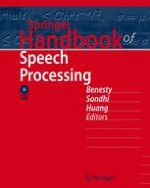2008 | OriginalPaper | Buchkapitel
42. Vector-Based Spoken Language Classification
verfasst von : Haizhou Li, Dr., Bin Ma, Dr., Chin-Hui Lee, Dr.
Erschienen in: Springer Handbook of Speech Processing
Verlag: Springer Berlin Heidelberg
Aktivieren Sie unsere intelligente Suche, um passende Fachinhalte oder Patente zu finden.
Wählen Sie Textabschnitte aus um mit Künstlicher Intelligenz passenden Patente zu finden. powered by
Markieren Sie Textabschnitte, um KI-gestützt weitere passende Inhalte zu finden. powered by
